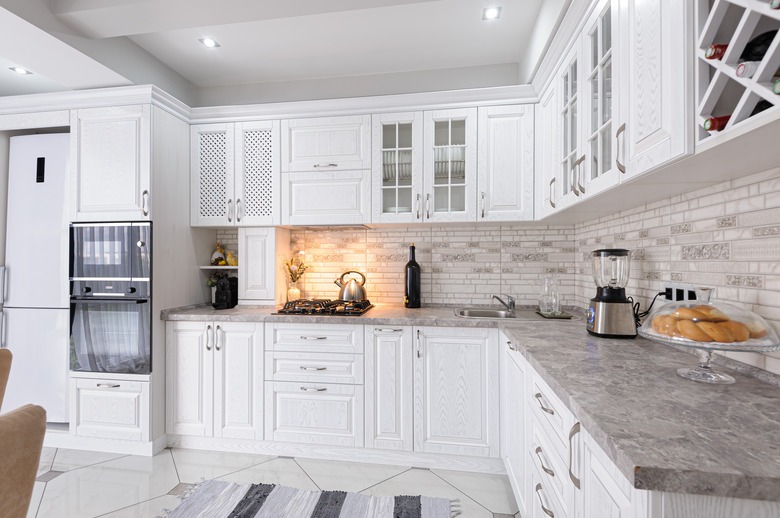Why Does Only The Kitchen Faucet Run Slowly?
Water pressure differs from home to home, even on the same block in some cases. The problem of overall low water pressure is probably because of plumbing problems that are too complex for the average homeowner to fix. A slow faucet in kitchen that's running slowly, however, means that the problem is at the faucet or the household pipes leading to the facet.
Tip
If the kitchen facet is the only household faucet that runs slowly, look for clogged faucet cartridges, blocked faucet aerators and potential clogs in under-sink supply hoses. A low-flow kitchen faucet, which is designed to flow at a lower rate to save water, may also be the reason.
Kitchen Faucet Cartridge Is Clogged
Kitchen Faucet Cartridge Is Clogged
Each faucet has a ceramic disc cartridge in the handle area to moderate the flow of the water and its temperature. This part has tiny holes to allow water through to the spout. Sediments and minerals, not to mention dirt and debris, can clog these holes on occasion, causing the amount of water flowing through them to drop.
If only one faucet is experiencing low water pressure, whether it's a kitchen, bath or bar faucet, this is probably the problem. To fix it, remove the handle and kitchen faucet cartridge, then flush the cartridge under clean water before placing it back in the faucet housing.
Kitchen Faucet Aerator Is Blocked
Kitchen Faucet Aerator Is Blocked
Another common problem is a blocked aerator. This is often the issue in kitchens where the faucet is frequently used. Sediments or debris in the water clog this part just like they do the cartridge. Since the aerator, which is located at the end of the spout, has a mesh screen, particles build up on it over time.
Unscrew the aerator, which looks like a small mesh screen, from the end of your kitchen faucet; replace it with a new one or clean the old one. Rinse the aerator with hot water and use an old toothbrush to dislodge any particles that may have gotten clogged in the mesh. If you live in a municipality that has hard water, you may notice that the aerator is clogged with minerals such as calcium and magnesium. Soak mineral-encrusted aerators in white vinegar before scrubbing them clean.
Low-Flow Kitchen Faucet
Low-Flow Kitchen Faucet
Another possibility is a low-flow faucet. Some faucets have lower flow rates already built in. This is to save water and money, so for some it is a benefit. If you moved into a home and the faucet has always been flowing at a low rate, or you recently installed a new faucet and the flow is now lower, this is probably the culprit. The obvious solution is to replace the faucet with a higher-flow product.
Kitchen Faucet Problems From Plumbing
Kitchen Faucet Problems From Plumbing
It is possible that the low flow rate is a plumbing issue. A blockage in the pipes to the kitchen faucet causes lower flow rates. However, the possibility that a blockage occurred just in pipes to the kitchen and does not affect the other faucets is rare if not virtually impossible. Check the hoses under the sink, the ones leading to the faucet for blockages, hair or particle matter just in case.
